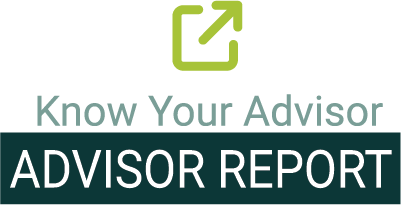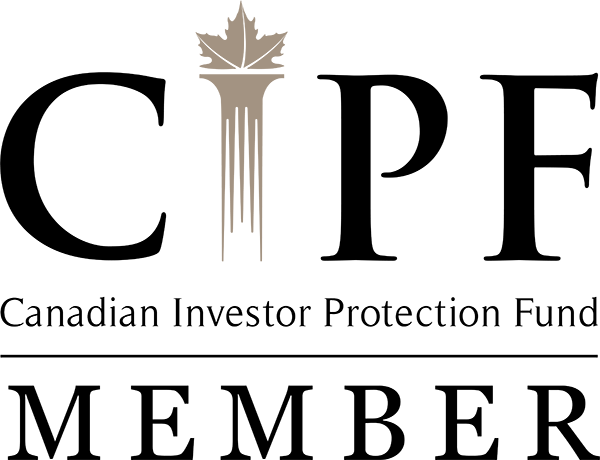Moving Your Roth IRA Account to Canada
Written by Tiffany Woodfield, CRPC®, CIM® Portfolio Manager
Reading Time: 10 minutes 21 seconds
When you have a Roth IRA in Canada, you may be concerned about whether the rules are the same as they are in the US. You might also wonder if you will face an unexpected tax bill from the IRS or CRA by retaining it..
When you're moving your Roth IRA to Canada, there are a few rules to follow to make sure your Roth doesn't become tainted. You must understand the tax implications in order to stay onside with the IRS and CRA.
Summary of Key Points:
- You can bring a Roth IRA to Canada.
- A Roth IRA is similar to a TFSA in Canada.
- Canada taxes based on residency, and the US taxes based on citizenship.
- Find a cross-border financial advisor who can manage your Roth IRA from Canada.
- Work with a qualified Cross-border accountant to understand your situation.
Does Canada recognize Roth IRAs?
In Canada, Roth IRAs are not recognized in the same way as they are in the US. After December 31st, 2008, the Canada-US Tax Treaty made changes that allow a Roth IRA to qualify as a pension. This change allows Canadian residents to file an election to defer Canadian tax on the income earned in the plan. But there's a caveat. This election must be filed on time, and there cannot be any Canadian contributions to it once you are a resident of Canada.
Take note that if you do not follow these rules, any income earned in a Roth IRA could be taxable on an annual basis.
Income Tax Folio S5-F3-C1, Taxation of a Roth IRA - Canada.ca
Is there a Roth IRA in Canada?
In Canada, we do not have a Roth IRA. The most similar investment vehicle is the TFSA, which stands for tax-free savings account.
Both a Roth IRA and a TFSA are set up by their respective governments to encourage individuals to save money. Both vehicles are funded with after-tax dollars, i.e. money that you've already paid tax upon.
They offer tax-deferred growth, and any withdrawals you make from a Roth IRA or TFSA are generally not taxed*.
*For earnings from a Roth IRA to avoid tax or penalties, they need to be "qualified distributions."
Is a Roth IRA Taxable in Canada?
When you are moving your Roth IRA to Canada, you need to follow certain rules to keep the tax-free growth status, i.e. to make sure you don't have to pay tax on your Roth.
- You need to file a one-time treaty election by April 30th, the year after you became a resident of Canada.
- You must not contribute to your Roth IRA once you are a resident of Canada. If you do contribute, you will "contaminate" the Roth and lose the tax-free growth status. In other words, stop contributing to your Roth when you move to Canada so that your earnings stay non-taxable.
If you follow these Canadian rules and would be exempt from tax in the US if you were a US resident, you should also be exempt from tax in Canada.
Can I Also Keep My Traditional IRA If I Move to Canada?
Whether you are a Canadian citizen who has worked in the US, a dual citizen, or a long-term green card holder, when you move to Canada you can keep your traditional IRA. To keep your traditional IRA, you need to find a dual-licensed financial advisor. The earnings in your traditional IRA will continue to grow tax-free deferred, but withdrawals will be subject to income tax.
You must also note that you may no longer be able to contribute to your traditional IRA while living in Canada. In any event, you should never contribute to your traditional IRA while residing in Canada without consulting with your cross-border accountant first because in most circumstances the Canadian contributions could end up incurring double taxation.
When you take the money out of your traditional IRA, it is important to work with a qualified cross-border accountant who can advise you on taxation on both sides of the border.
Due to the complications and risk of double taxation, keeping your traditional IRA is often considered a better choice than transferring it to an RRSP. Also, note that you cannot transfer a Roth IRA to an RRSP.
Can I Move My Traditional IRA to Canada?
As long as you work with a dual-licensed financial advisor, you can move your traditional IRA to Canada. If you work with an advisor who is licensed and regulated in Canada and the US, that advisor can manage and advise on your traditional IRA when you are a Canadian resident. The advisor will be able to help you with withdrawal rules and how to plan for retirement. A dual-licensed financial advisor will also help you to maintain the benefit of the tax deferral of your traditional IRA.
Roth IRA vs TFSA—What's the Difference?
There are a number of differences between a Roth IRA and a TFSA, including contribution rules, carry forward rules, and penalties.
Contribution Rules
With a Roth IRA, you need earned income in order to contribute. Also, if your income exceeds certain thresholds, you are no longer eligible to contribute to a Roth IRA. However, a TFSA's contribution room is set by the Government of Canada and is not based on earned income. You only need to be a resident of Canada and over the age of 18 and have a to contribute to a TFSA.
Carry Forward Rules
With a TFSA, you can carry forward your contribution room to future years. For example, if you didn't contribute $6,000* to your TFSA in 2020, you could carry forward that sum to the following year. Then your contribution limit in 2021 would be $12,000 rather than $6,000.
But with a Roth IRA, if you do not contribute in a year, it does not create more contribution room in future years.
*The TFSA contribution limit for 2021 is $6000/year.
Tax and Penalties
If you take earnings out of your Roth IRA and it is not a qualified distribution, you may face a 10% penalty and be subject to US federal tax on those earnings. To be considered a qualified distribution, you have to be over the age of 59.5 and have had the money in the Roth IRA for at least five years. (However, there are a few exceptions to the 10% penalty, such as disability or financial hardship.)
But with a TFSA, you can make withdrawals at any time or age, and the withdrawal amount gets added back as contribution room gets added back to the following year. It is important that you don't put the money back into your TFSA in the same year you withdrew it, without first confirming whether it will put you over your contribution limit. That is because you could face a tax of 1% per month for every month there is an over-contribution in your account.
Tax-Free Savings Account (TFSA), Guide for Individuals
Is My US Pension Taxable in Canada?
The US is one of two countries that taxes its non-resident citizens. This means if you are a long-term green card holder or a US citizen living in Canada, you need to report your worldwide income to the IRS and to the CRA.
Your worldwide income refers to your income from all sources. You would report this US pension income on both your Canadian and US tax returns each year. Of course, you can claim a foreign tax credit on your Canadian tax return for the US tax paid on that income.
If you are not a US citizen or long-term green card holder and are living in Canada while receiving a US pension, you will be subject to a 15% US withholding tax on your US pension income. You can claim that withholding tax as a foreign tax credit on your Canadian tax return.
It is essential that you speak to a qualified cross-border accountant about your particular situation so they can help you match foreign tax credits and make sure you are onside with both governments.
Taxation_in_the_United_States.
Does Canada Tax Retirement Income?
When retiring, many people think about the taxation of their income. The following are examples of retirement income sources and how they would be taxed in Canada if you were a resident of Canada in retirement.
- Pensions such as Canadian Pension Plan (CPP) and Old Age Security (OAS) are counted as income and are taxed.
- When you take money out of a retirement plan such as RRSP, it is added to your income in the year you take it out. There are withholding taxes on RRSP distributions ranging from 10-30%, but ultimately the income is taxed at your graduated rate.
- Income from investments is reported annually on your tax return. Canadian dividends and capital gains are taxed at lower rates than foreign dividends and interest.
- Foreign income is taxed.
- U.S. Social Security is taxed only in Canada if you are a resident of Canada. Canada allows a 15% deduction on the income to mimic how only 85% of US social security is taxable in the US.
- Annual distributions from annuities and other pensions are taxed.
Tax rates on withdrawals - Canada.ca
For more information about how to manage your specific cross-border tax situation, it's important you speak with a cross-border accountant.
Next Steps
If you’re planning your retirement and need help with wealth management, estate planning, and portfolio management, please get in touch. At SWAN Wealth we specialize in cross-border financial planning and wealth management.
More Cross-Border Financial Planning Articles & Guides
If you’re planning a cross-border move, these articles and guides will help you simplify your move and make sure you’ve got everything covered.
Roth IRA Canada: How to Manage Your Investments Across the Border
The Ultimate Financial Planning Resource for Dual Citizens or Green Card Holders Living in Canada
Retiring to Canada - A Financial Planning Guide
Financial and Tax Planning for US Citizens Living in Canada
Canadian RRSP Facts for Dual Citizens, Expats and Canadians
About the Author
Tiffany Woodfield is a portfolio manager and the co-founder of SWAN Wealth Management, along with her husband, John Woodfield. Tiffany specializes in advising clients who live both in Canada and the United States and need to simplify their cross-border financial plan, move their assets across the border, and optimize their investments so they can minimize their tax burden. Together Tiffany and John Woodfield, CFP and Portfolio Manager, help their clients simplify their cross-border finances and create long-term revenue streams that will keep their assets safe whether they live in Canada or the US. Click here to schedule an introductory call with SWAN Wealth Management.
Schedule a Call
Schedule a 15-minute discovery call and find out if we can help you simplify and optimize your retirement investments.
SCHEDULE A CALL

Information in this article is from sources believed to be reliable, however, we cannot represent that it is accurate or complete. It is provided as a general source of information and should not be considered personal investment advice or solicitation to buy or sell securities. The views are those of the author, SWAN Wealth Management, and not necessarily those of Raymond James Ltd. Investors considering any investment should consult with their Investment Advisor to ensure that it is suitable for the investor’s circumstances and risk tolerance before making any investment decision. Raymond James Ltd. is a Member - Canadian Investor Protection Fund. Raymond James (USA) Ltd., member FINRA/SIPC. Raymond James (USA) Ltd. (RJLU) advisors may only conduct business with residents of the states and/or jurisdictions for which they are properly registered.






